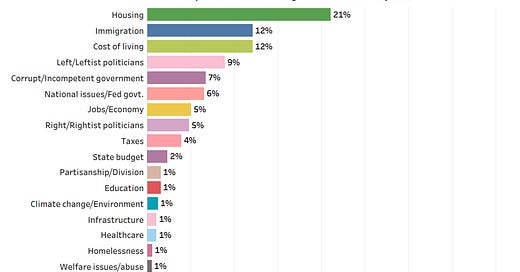Boston Focus, 6.6.25
If there will be new buildings for Massachusetts public universities, let's have more kids in them, too
Why is a multi-billion dollar education initiative not being talked about as education policy?
A State House hearing on Tuesday featured the full force of the Healey Administration and Massachusetts public higher education, advocating for the BRIGHT Act: $2.5B to overhaul facilities across 29 public higher education campuses.
There was little talk or coverage of the educational impacts of this investment, and there may be good reason. Massachusetts voters don’t seem to care.
But the BRIGHT Act does take direct aim at affordability and the state of the economy. Keeping capital costs off public universities’ books means less stress on the operations side, potentially keeping tuition and fees in check. Further, there was data just released yesterday that the expanded MassGrant Plus saved Massachusetts students and families +$100M at Massachusetts public universities.
All this activity will create jobs for a decade. It even helps with climate goals.
Win, win, win.
But why stop here?
I have already made the argument that America’s most selective colleges and universities should be enrolling more students. Public colleges and universities are even better positioned to do so, with potentially big state subsidies and a lower average cost in a market where there is real price sensitivity.
Public universities like the University of Florida and the University of Washington pursued sophisticated growth strategies that have resulted in increased demand, enrollment, and reputation. But in the ~ten years since this data has been publicly available, MA students’ enrollment in MA public higher education has actually dropped.
A slight bump in UMass enrollment was undercut by declines in state university and community college campuses.
Repairs, renovations, and new buildings can enhance the student experience, create economic activity, and capture a lot of carbon. They could also help to fuel the expansion of educational access and opportunities in Massachusetts.
Even if people aren’t asking for it right now.
Schools
With limited information on the school bus accident that killed Lens Joseph, a nearly fatal BPS bus accident in December has resulted in a lawsuit.
Soon-to-be Commissioner Pedro Martinez shared his big priorities.
Massachusetts school districts grappling with creating high school graduation standards without assessments are not alone. The Commonwealth is letting you weigh in directly with this online survey.
One of the critiques lobbed at standardized assessments is that they “narrow” the curriculum, with too much focus on literacy and math. Sounds right, it’s just that the data may not support that assertion.
The data that feeds this analysis is late and in peril due to Trump Administration education cuts.
There is a recurring thread in education circles concerning boys, specifically how they have struggled more in school in the shift to a standards-based environment, earlier literacy requirements, etc. A new report links this to kindergarten readiness.
Here is the most recent MA data, which points to literacy as a focus.
Data from three states show a pattern of chronic absenteeism identical to Boston/MA: declined, but appearing to be fixed at a permanently higher rate.
Has anyone crosswalked Trump’s proposed new travel ban and international student enrollment at Harvard? Could be a failsafe given his other attempts are setting speed records for judicial intervention.
Aside from its continued haymakers directed at Harvard, the Trump Administration's lost another legal battle in its quest to cut/end the Department of Education, had to defend its budget in the Senate, and still had time to erroneously arrest and detain a Milford teenager.
Other Matters
The Boston Public School budget passed 11-2, but the days of easy votes may be numbered.
Updated projections from the Tufts University Center for State Policy Analysis paint a darker future for Boston’s municipal finances.
A decline in commercial tax revenue and the strictures of Proposition 2 ½ create a very stubborn algebra problem without any good multiple choice options.
A. Reduce spending [hard to do when 50% of the budget is for staff, many of whose jobs are protected by collective bargaining agreements]
B. Increase taxes on commercial buildings [hard to do because the legislature won’t let you and economists aren’t fans]
C. Increase taxes on homeowners [hard to do because people will be mad]
D. Increase revenue through alternative means like an income tax or a “sugar” tax [hard to do because the legislature hasn’t passed this bill]
E. Increase tax revenue by building more homes [hard to do with the high cost of building in Boston paired current interest rates]
Unfortunately “none of the above” is not an option, so last December the city had to bubble in “C.”
This question is not going away.












Curious to see how declining national college enrollment (as a demographic trend; college-goers are peaking right now I believe) influences this over the coming years
Guessing you are well informed on left leaning centrists who have become critical of blue state/blue city governance and its general failure to solve for today's challenges. I think a study of how a Republican-led state like Florida has fueled their university system while a state like MA which prides itself on educational achievement has done little to make their public universities top of mind for any and all is a great example. Wealthy high achievers in Florida (and Texas and many others) want to attend their state schools. While the populists among us might not like this the benefits are huge -- there is popular support for the state university system across the entirety of the population and the parents of these kids become loyal donors both of which provide benefit to the many who are further down the socio-economic ladder.